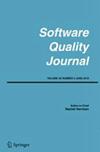提高公共行政的灵活性
IF 1.7
3区 计算机科学
Q3 COMPUTER SCIENCE, SOFTWARE ENGINEERING
引用次数: 1
摘要
在危机时期,如难民危机或冠状病毒大流行,由于公民的需求或短期法律变化,公共管理部门的工作量会增加。此外,对数字化或灵活应对变化的需求也日益增加。敏捷流程模型和敏捷实践适合于克服这些挑战。本文旨在研究公共管理部门如何衡量其敏捷程度,以确定改进的潜力。作者在德国的一个公共行政部门开展了一项描述性单一案例研究,其中包括多个分析单位。该案例研究得到了他们用于衡量敏捷程度的调查问卷的支持。这项研究的成果之一是提出了一个概念框架,可用于通过持续测量敏捷性来推动公共行政机构的敏捷转型。因此,我们编制了一份用于衡量公共行政部门团队敏捷性的调查问卷。通过在三个团队中应用该问卷,可以深入了解跨学科团队中的功能障碍,以及在变革亲和力方面的优化潜力。在公共行政中采用敏捷性是一项挑战,因为抵制变革的现象仍然普遍存在。转型变革是一个持续的过程,因此,对进展情况的衡量对组织的持续改进起着重要作用。这种应用方法在敏捷性方面具有很大的改进潜力,并为从业人员和学术界提供了有趣的见解。本文章由计算机程序翻译,如有差异,请以英文原文为准。
Towards improving agility in public administration
In times of crises, such as the refugee crisis or the corona pandemic, the workload in public administrations increases because of the demands of citizens or short-term legal changes. In addition, there is an increasing need for digitalization or to be able to react flexibly to changes. Agile process models and agile practices are appropriate to overcome these challenges. The objective of this paper is to investigate how public administrations can measure their degree of agility to identify potential for improving it. The authors conducted a descriptive single-case study which included multiple units of analysis in a public administration in Germany. The case study was supported by their questionnaire for measuring the degree of agility. One outcome of this study is a conceptual framework that can be used to drive agile transformation in public administrations by continuously measuring agility. Therefore, a questionnaire for measuring agility at team level in public administrations has been developed. The application of the questionnaire in three teams provide insights into dysfunctionality in the interdisciplinary teams as well as optimization potential in terms of affinity to change. The adoption of agility in public administration is a challenge, given that resistance to change is still prevalent. A transformational change is a constant journey, and therefore, the measurement of progress plays an important role in the continuous improvement of an organization. The applied approach delivers high potential for improvement in terms of agility and provides interesting insights for both practitioners and academics.
求助全文
通过发布文献求助,成功后即可免费获取论文全文。
去求助
来源期刊

Software Quality Journal
工程技术-计算机:软件工程
CiteScore
4.90
自引率
5.30%
发文量
26
审稿时长
>12 weeks
期刊介绍:
The aims of the Software Quality Journal are:
(1) To promote awareness of the crucial role of quality management in the effective construction of the software systems developed, used, and/or maintained by organizations in pursuit of their business objectives.
(2) To provide a forum of the exchange of experiences and information on software quality management and the methods, tools and products used to measure and achieve it.
(3) To provide a vehicle for the publication of academic papers related to all aspects of software quality.
The Journal addresses all aspects of software quality from both a practical and an academic viewpoint. It invites contributions from practitioners and academics, as well as national and international policy and standard making bodies, and sets out to be the definitive international reference source for such information.
The Journal will accept research, technique, case study, survey and tutorial submissions that address quality-related issues including, but not limited to: internal and external quality standards, management of quality within organizations, technical aspects of quality, quality aspects for product vendors, software measurement and metrics, software testing and other quality assurance techniques, total quality management and cultural aspects. Other technical issues with regard to software quality, including: data management, formal methods, safety critical applications, and CASE.
 求助内容:
求助内容: 应助结果提醒方式:
应助结果提醒方式:


